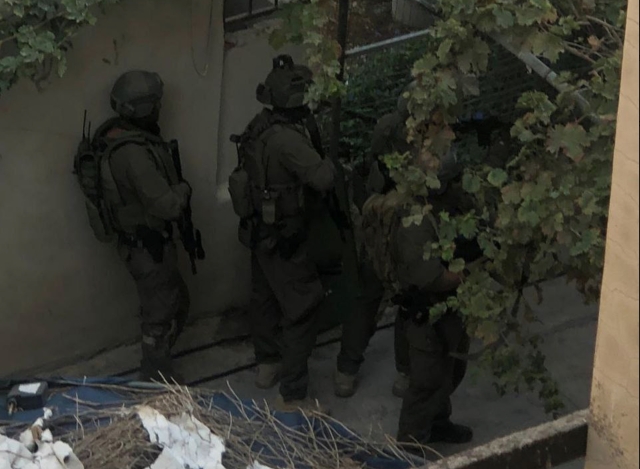In a strategically executed operation on Wednesday morning, the Israel Defense Forces (IDF) made its second foray this week into the Jenin refugee camp, located in northern Samaria (also called the West Bank). This came after a near two-month interval during which the IDF had refrained from entering the camp. The operation saw security forces surrounding and arresting a suspected terrorist without any resistance on his part. According to Palestinian reports on Telegram, the arrested individual was identified as Muhammad Nangia, affiliated with the al-Aqsa Brigades; however, this identity has yet to be confirmed by the IDF.
The spontaneous nature of the operation was noteworthy. Typically, such raids are meticulously planned in advance and carried out during the night. However, the intelligence that catalyzed this particular mission materialized only a short time before its commencement. Thus, the IDF chose a daytime operation, with forces entering the area in the morning and starting to withdraw by 10:00 a.m.
The IDF 🇮🇱 are again forced to undertake counter terrorist operations in Jenin to protect both Israelis and Palestinians.
— The Consultant (@TheConsultant18) September 6, 2023
Both the Palestinian Authority and their security forces have failed allowing Jenin to become a vipers nest of terrorism funded from Iran. https://t.co/OVLp3vDBbS
Despite the non-resistance from the primary suspect, the IDF did encounter armed resistance during the operation. As they entered and began their withdrawal from the refugee camp, the IDF forces engaged in gunfights with other individuals. This highlights the volatile and unpredictable nature of operations in such densely populated and politically charged environments.
In an unexpected turn of events, the operation yielded significant results beyond the original objective. Three individuals with affiliations to Hamas were taken into custody. They were identified as Abdallah Hassan Muhammad Zubah, Vered Asherif, and Mutazben Jaitza. The capture of Zubah, in particular, represents a major operational success for Israel. He had been a pivotal figure in recent attempts to launch rocket attacks from Judea and Samaria, thereby opening a new front against Israel. Moreover, Zubah was known to be instrumental in the Mevo Dotan attack and several other terror acts and fundraising efforts. His capture comes after multiple unsuccessful attempts, making this operation a significant coup for the Israeli security apparatus.
Additionally, the operation demonstrated the IDF's effective use of a mixed arsenal and personnel. A combination of IDF drones, Maglan commandos, paratroopers, Menashe infantry, and Shin Bet forces engaged in neutralizing various targets. Among these was a hidden weapons cache located beneath a mosque, destroyed during the operation.
IDF says Israeli security forces are currently operating in Jenin. pic.twitter.com/eaIkfGiLSX
— Moshe Schwartz (@YWNReporter) September 6, 2023
Prior to the mission, intelligence estimates had flagged around 150 specific wanted suspects in the Jenin refugee camp, which has a population of 49,000. Estimates had also noted that the camp could potentially harbor up to 300 combat fighters. During the course of the operation, approximately 120 individuals were detained, although not all were on the list of suspects, and some were subsequently released.
While this mission has been lauded for its successes, it has also underscored the ongoing challenges facing the IDF. A comprehensive picture of the whereabouts of individuals from the list of 300 potential fighters remains elusive. This highlights the necessity for ongoing intelligence gathering and strategic planning to ensure Israel's security interests in the volatile West Bank region.
The @IDF confirms that security forces are operating in Jenin, saying “details to follow.” https://t.co/RG0tu4vWBf
— Israel War Room (@IsraelWarRoom) September 6, 2023
Overall, the July operation in the Jenin refugee camp represents a significant accomplishment in Israel's ongoing efforts to maintain national security and combat terrorism. Its success can be attributed to both spontaneous intelligence and the tactical adaptability of the IDF, characteristics that will be crucial in addressing future threats.


